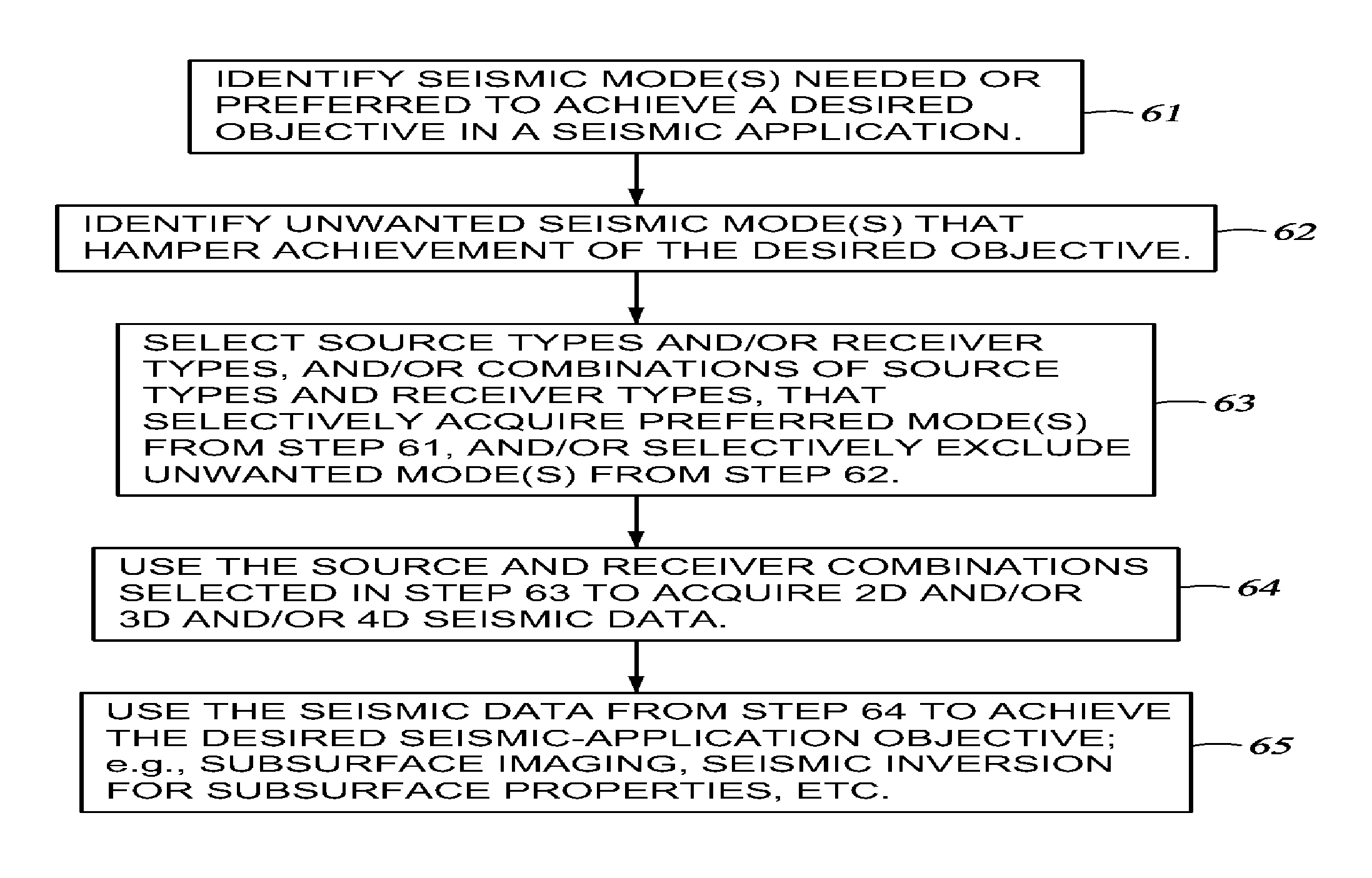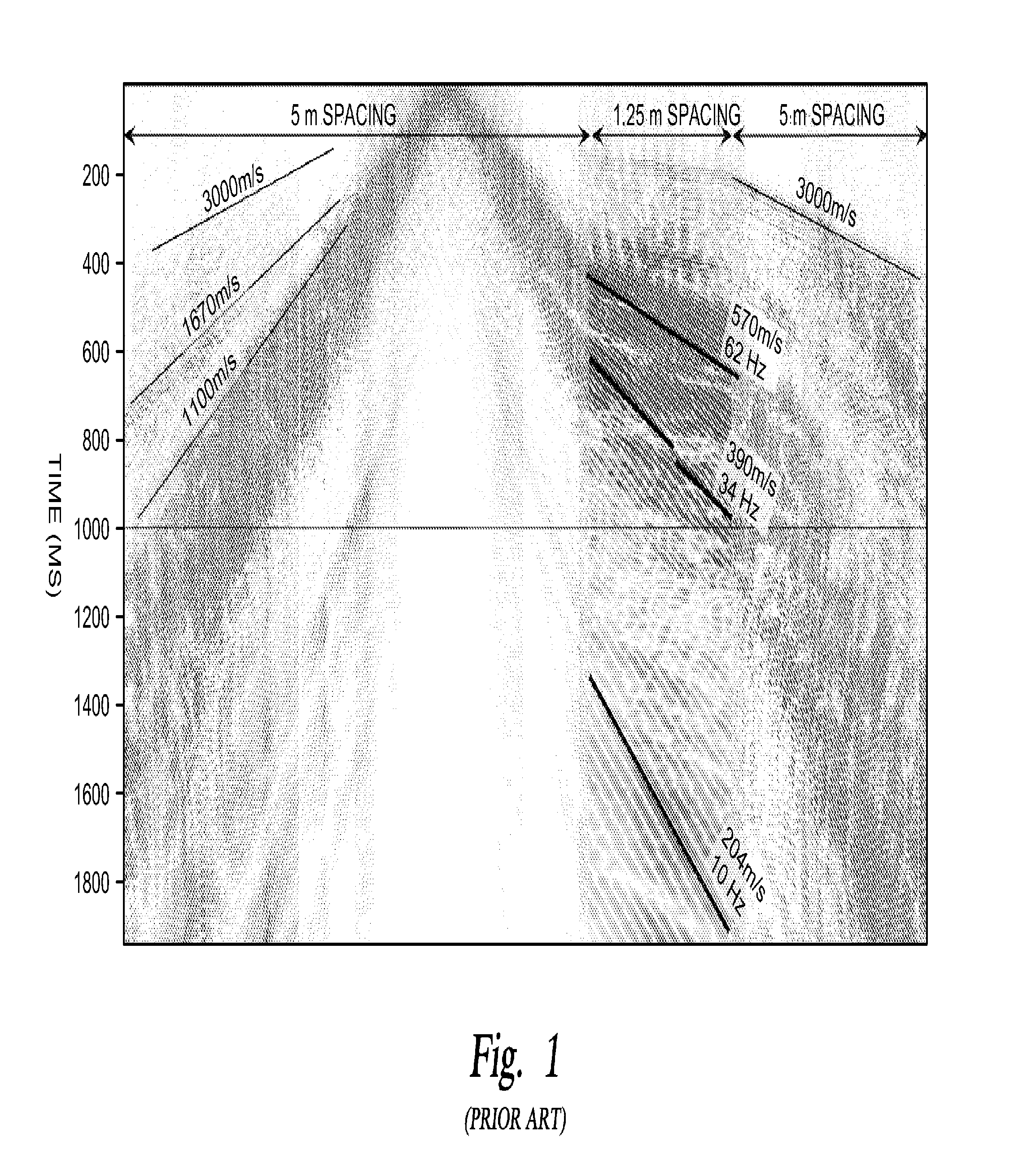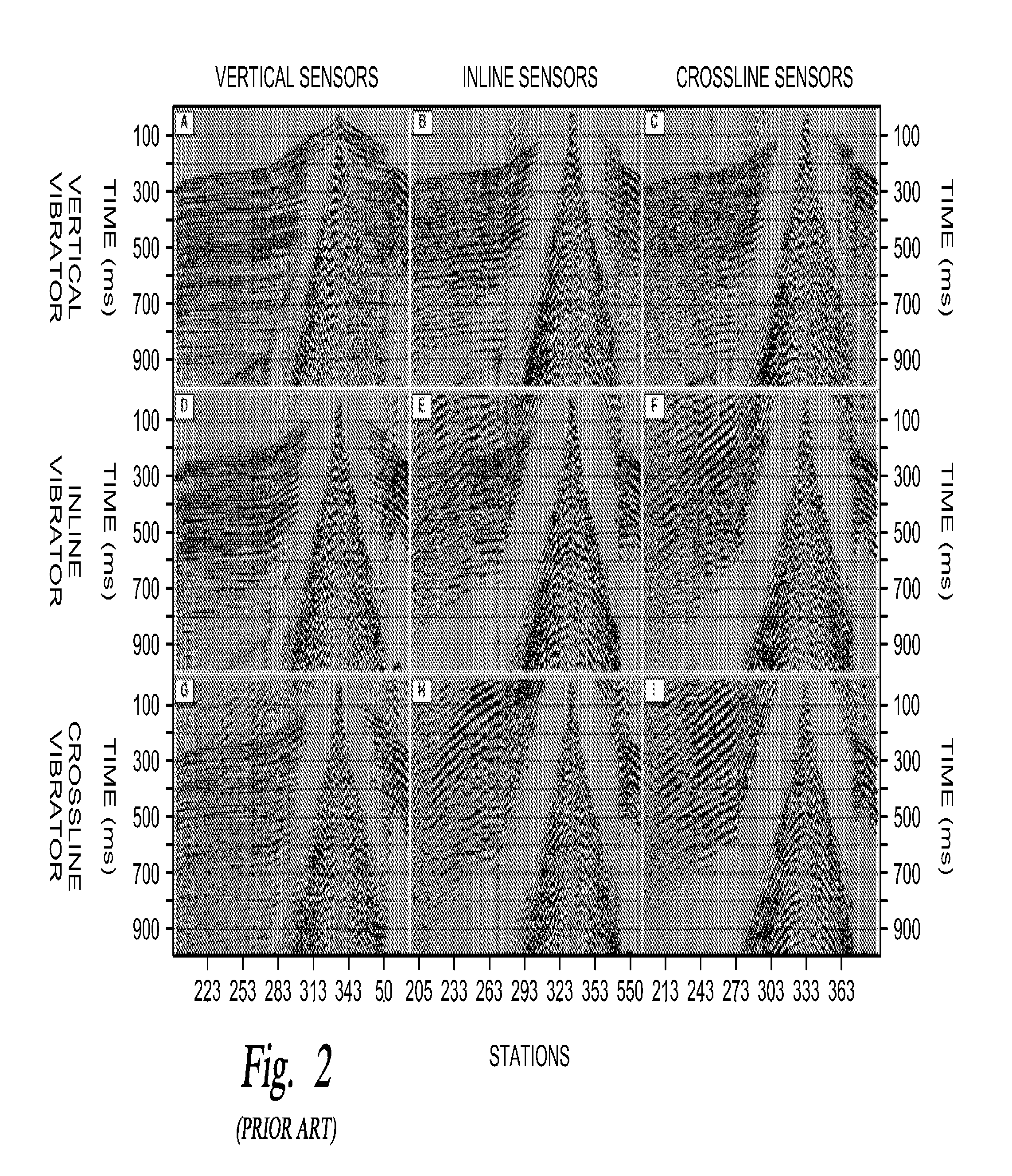Seismic Acquisition Method for Mode Separation
a seismic data and acquisition method technology, applied in seismology, seismology, instruments, etc., can solve problems such as limited processing performance, substantial errors or noise, and difficult methods relying on translational motion sensors
- Summary
- Abstract
- Description
- Claims
- Application Information
AI Technical Summary
Benefits of technology
Problems solved by technology
Method used
Image
Examples
Embodiment Construction
[0035]One embodiment of the invention relates to mode separation in 2C ocean bottom acquisition to distinguish compressional waves, i.e. to separate P-waves from S-waves. The embodiment uses two collocated sensor types, each selectively sensitive to compressional waves and not sensitive to shear waves, for 2C seismic acquisition. One sensor type is a pressure sensor, for example a hydrophone as used in conventional 2C acquisition. A second sensor type is a pressure gradient sensor, for example one as disclosed by Meier (2007, U.S. Pat. No. 7,295,494), oriented to measure the vertical component of pressure gradient. This embodiment has considerable mode distinguishing advantage over conventional 2C ocean bottom cable (OBC) acquisition that uses a hydrophone and vertically oriented translational motion sensors (geophones or accelerometers) to measure pressure modulation and modulation of vertical translational motion, respectively. The hydrophone is a pressure sensor and is, therefore...
PUM
 Login to view more
Login to view more Abstract
Description
Claims
Application Information
 Login to view more
Login to view more - R&D Engineer
- R&D Manager
- IP Professional
- Industry Leading Data Capabilities
- Powerful AI technology
- Patent DNA Extraction
Browse by: Latest US Patents, China's latest patents, Technical Efficacy Thesaurus, Application Domain, Technology Topic.
© 2024 PatSnap. All rights reserved.Legal|Privacy policy|Modern Slavery Act Transparency Statement|Sitemap



